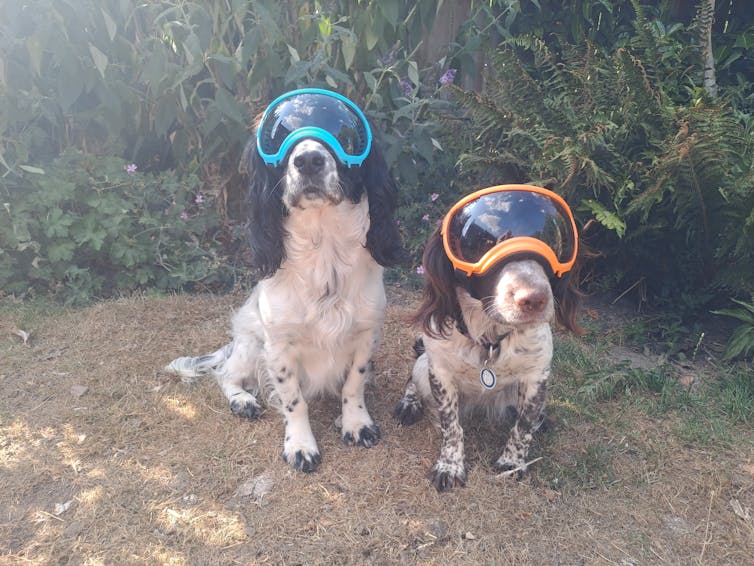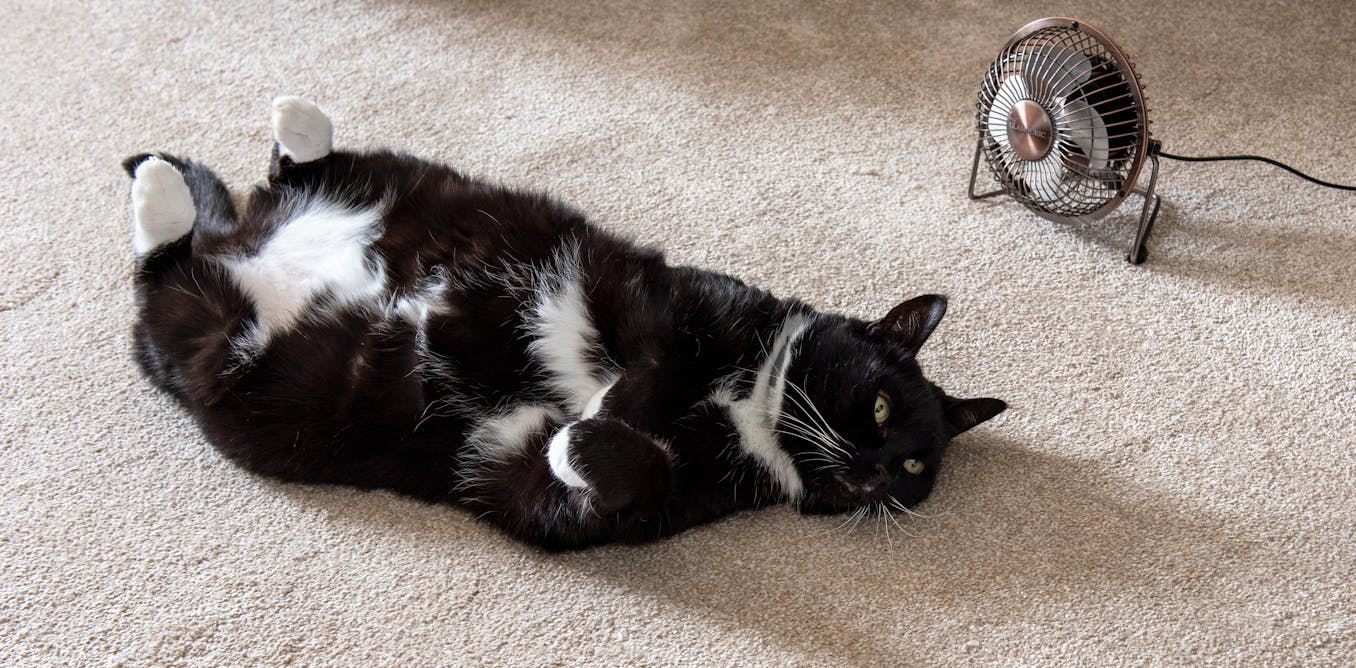While there is good awareness of the potential dangers of pets overheating in high temperatures during summer months, recognising that the sunburn itself can be a source of harm is also important.
We might think that our furry friends are protected from the sun’s harmful rays thanks to their typical hairiness, but in reality, we need to protect them too.
This is especially important for pets with light-coloured hair, pale, pink skin or those with fine or thin coats such as the sphynx cat or the xoloitzcuintle dog that lack natural protection.
For pets that live outdoors or spend a lot of time in the sun, this can also be a significant problem.
Get your news from actual experts, straight to your inbox. Sign up to our daily newsletter to receive all The Conversation UK’s latest coverage of news and research, from politics and business to the arts and sciences.
Pink skin lacks the pigment, melanin, that provides a natural level of protection from sunlight. As a result, pets with exposed areas of pink skin can become painfully sunburned, even on days that might not appear overly sunny. The tips of cats’ ears are commonly affected, as are horses with pink muzzles and other lightly pigmented areas of their body.
Dogs can also be affected on their noses and bellies – I have even known one unfortunate pooch to suffer sunburn on his scrotum after a period of garden sunbathing. Essentially, just like us, any unprotected area of skin that is exposed to the sun can become painfully burned, with both short and more prolonged effects.
Even minor areas of sunburn are associated with reddening of the skin, irritation and discomfort. More severe cases of sunburn can cause blistering, crusting and scabs to form on affected areas. While these signs typically heal and resolve quickly, they can be painful and distressing for our pets.
The longer-term consequences can include significant damage to the skin and may increase the risk of certain forms of skin cancer developing.
There is also the potential for thermal burns to occur after exposure to intense sunlight, especially over the backs of animals. These can be severe, affecting the full thickness of the skin and causing significant distress.
Consequently, protecting our pets from the pain of sunburn is important.
How to protect your pet
An easy way to keep your pet safe both from the damaging UV radiation in sunlight and high temperatures, is to limit their access outdoors during the sunniest and warmest times of the day. This might mean exercising your dog early in the morning and later in the evening, providing shade and shelter for horses and encouraging cats to sunbathe safely indoors.
The use of sunscreen can be a useful protective method to limit harm to exposed areas of skin, but do select a pet-safe sunscreen. Many human sunscreen preparations contain ingredients that can be toxic for our pets, especially if accidentally licked and ingested.
Reapply sunscreen regularly and don’t forget to apply it to the areas most likely to be exposed, such as ears, noses and pink-skinned or lightly coated areas of the body.
For some pets, suitable protective clothing and coverings, including UV eye protection might be appropriate, although do take time to get your pet used to wearing and moving in these before use.

Jackie Boyd, Author provided (no reuse)
What if your pet has been sunburned?
If your pet gets a mild sunburn but seems comfortable and not in distress, a cold compress can offer some soothing relief. Gently apply it to the affected area to help ease discomfort. Keep a close eye on the healing process, and be sure to protect your pet from further sun exposure.
In more severe cases, contact your vet for advice and additional treatment. Painkillers or antibiotics might be needed and these can only be prescribed for your pet by a veterinary surgeon.
Equally, if you find unusual areas on your pet’s skin such as non-healing or unusually crusty sores and are concerned that it could be a sign of skin cancer, speak to your vet for guidance and support.
Global UV levels are increasing. This means that in the same way that we have increased exposure to potentially harmful levels, our pets do too. By managing how our pets experience sunshine and by using protective options where possible, we can go some way to avoiding the pain and distress of sunburn, as well as the more serious possible long-term consequences such as skin cancer.

The post “Pets can get sunburned too – what you need to know” by Jacqueline Boyd, Senior Lecturer in Animal Science, Nottingham Trent University was published on 07/11/2025 by theconversation.com







































Leave a Reply